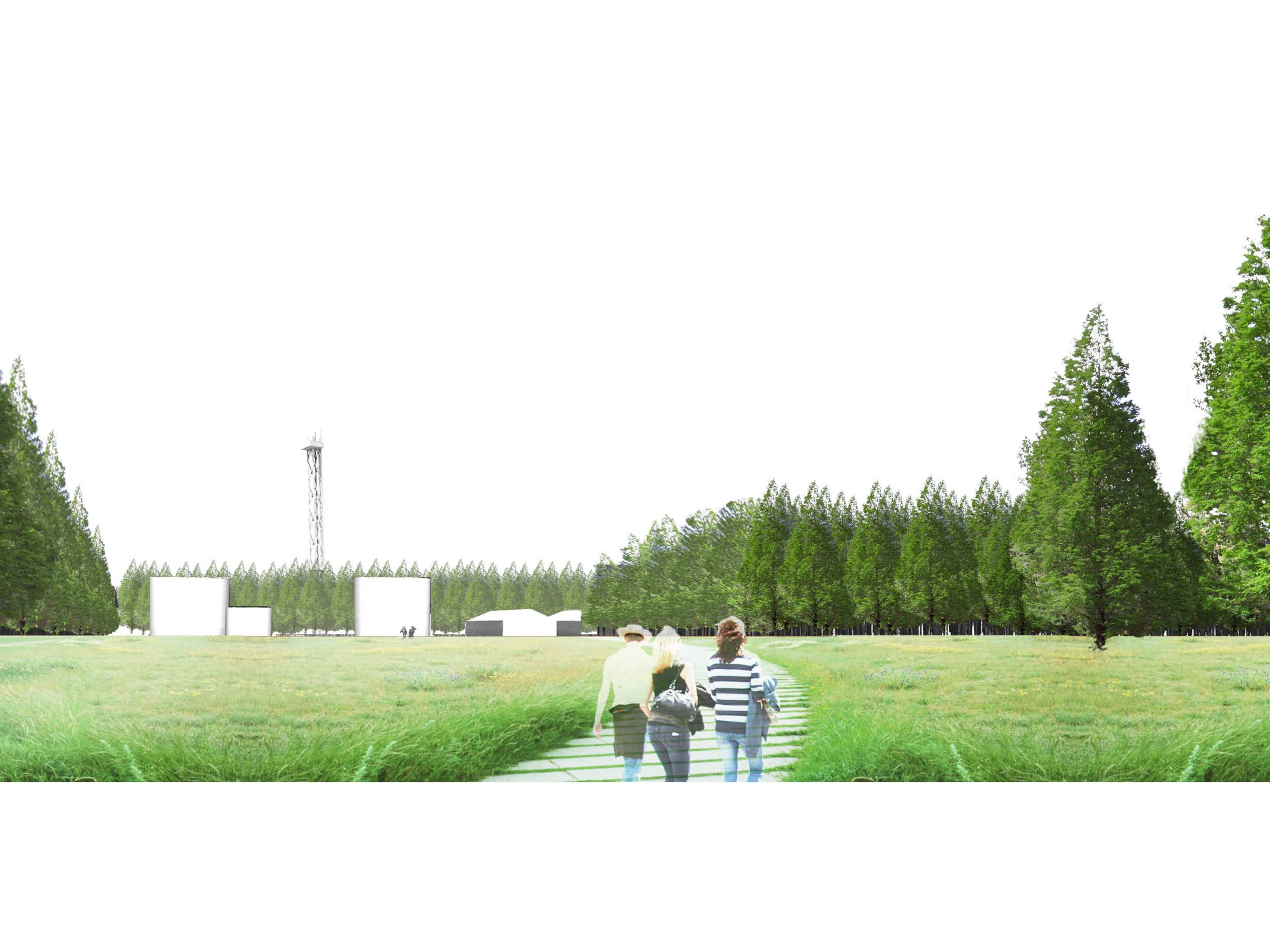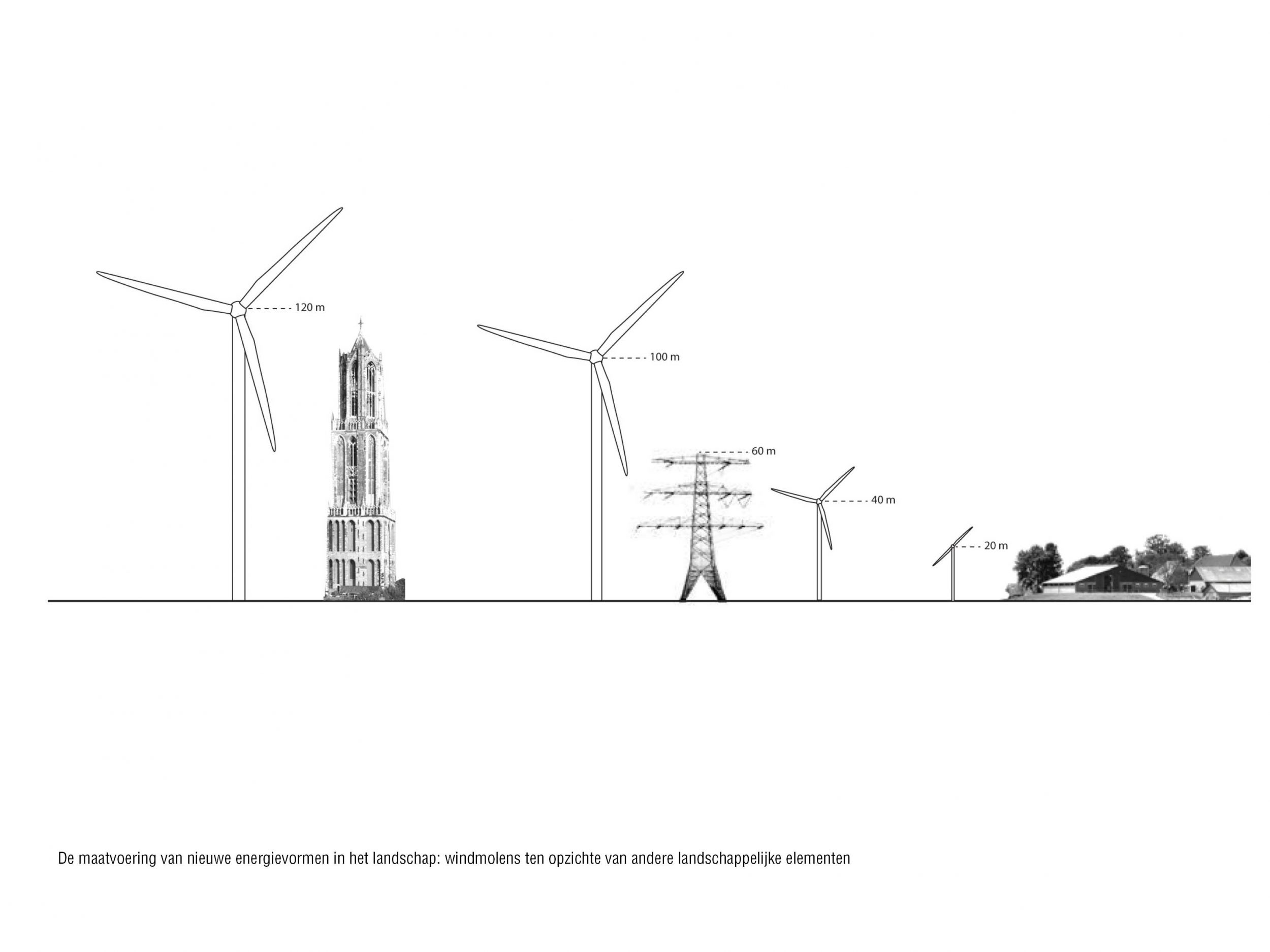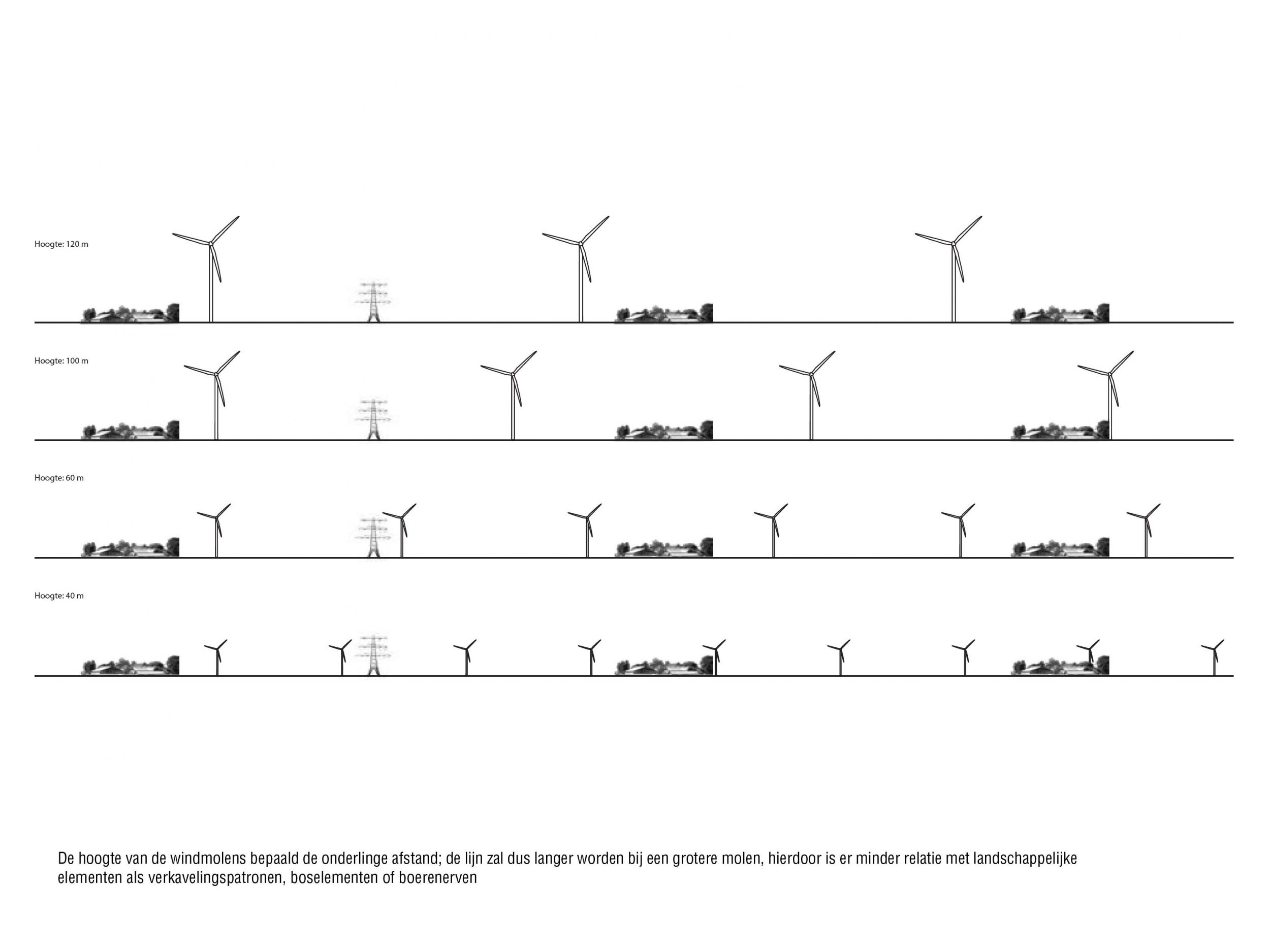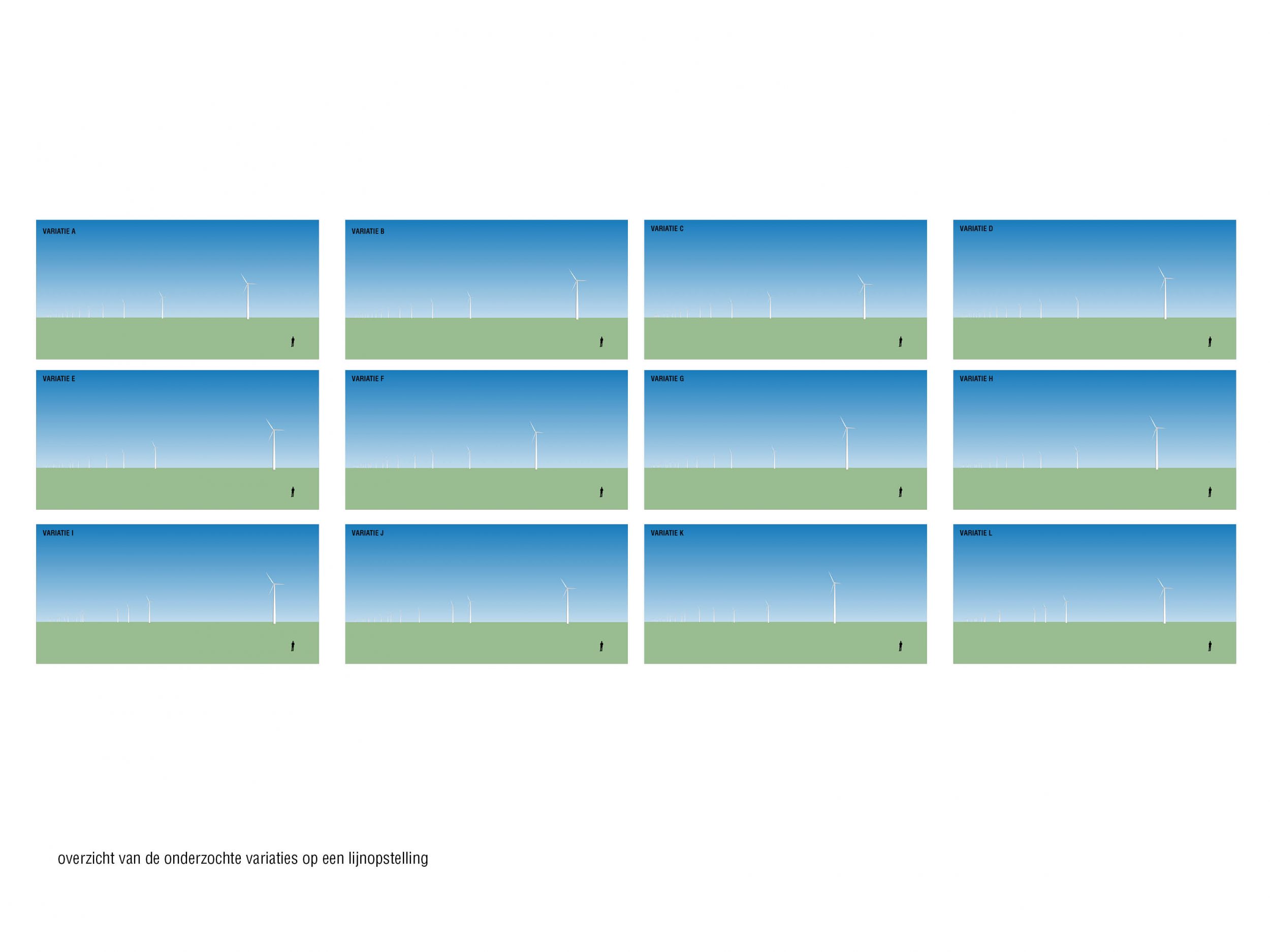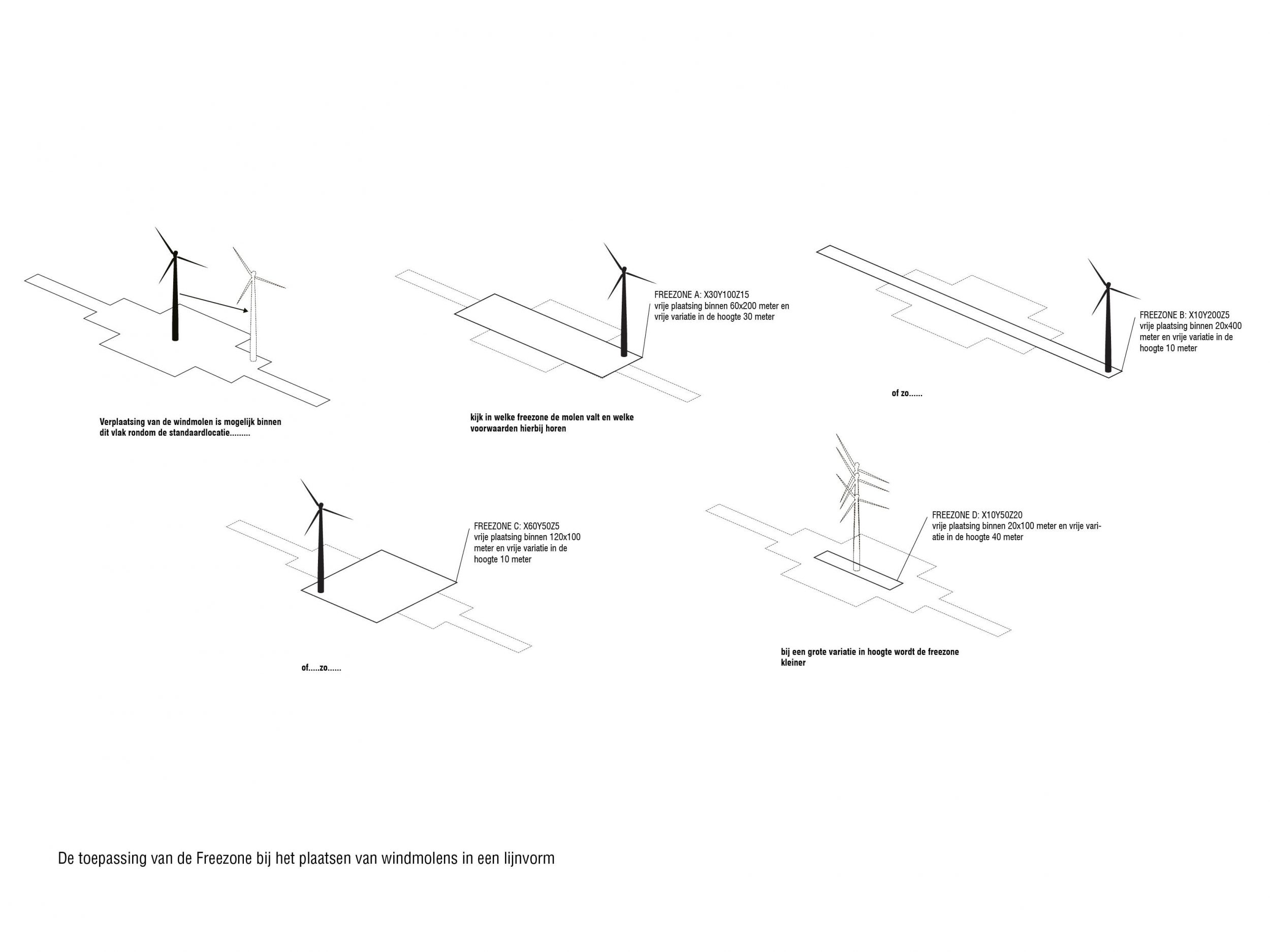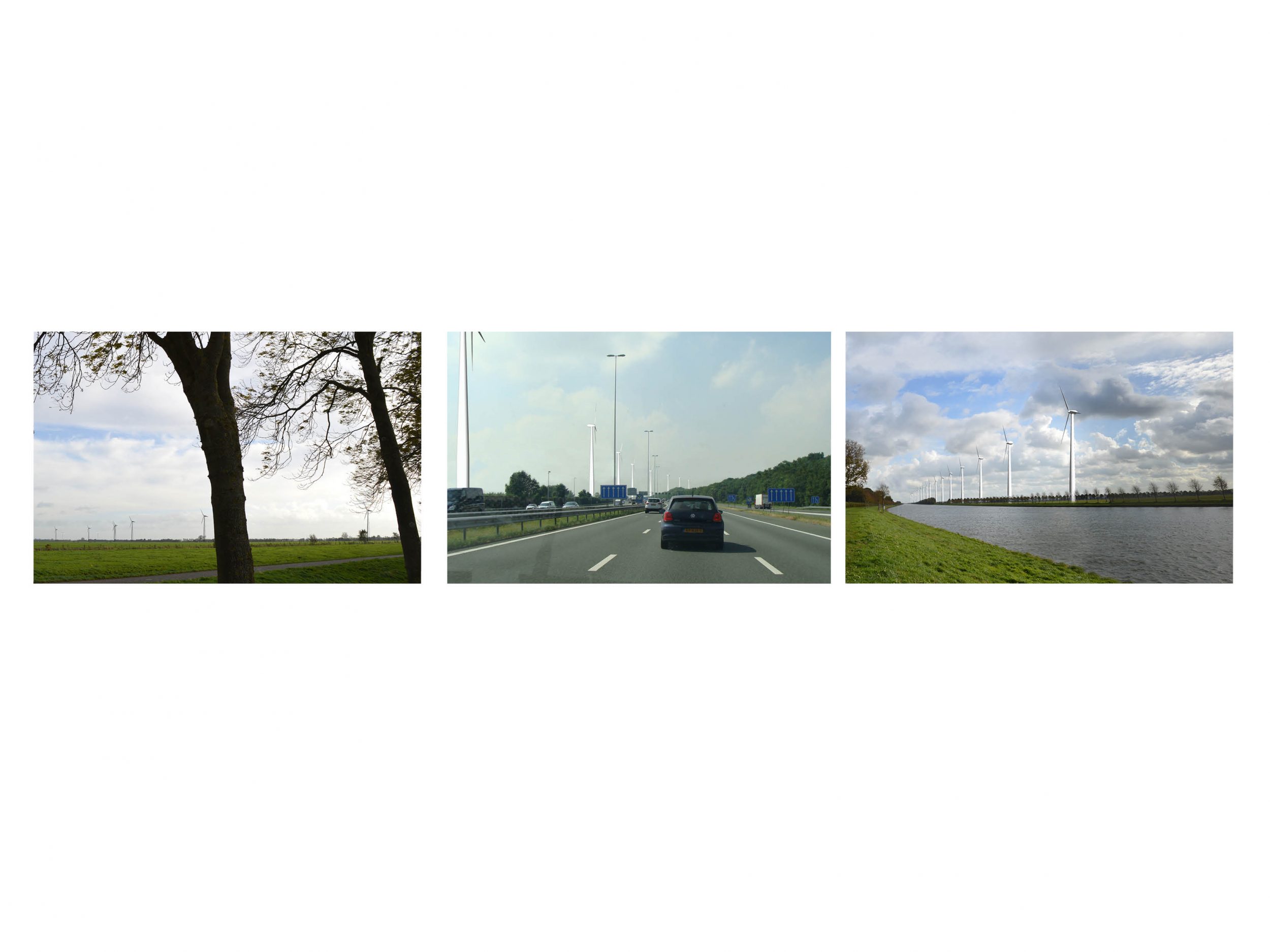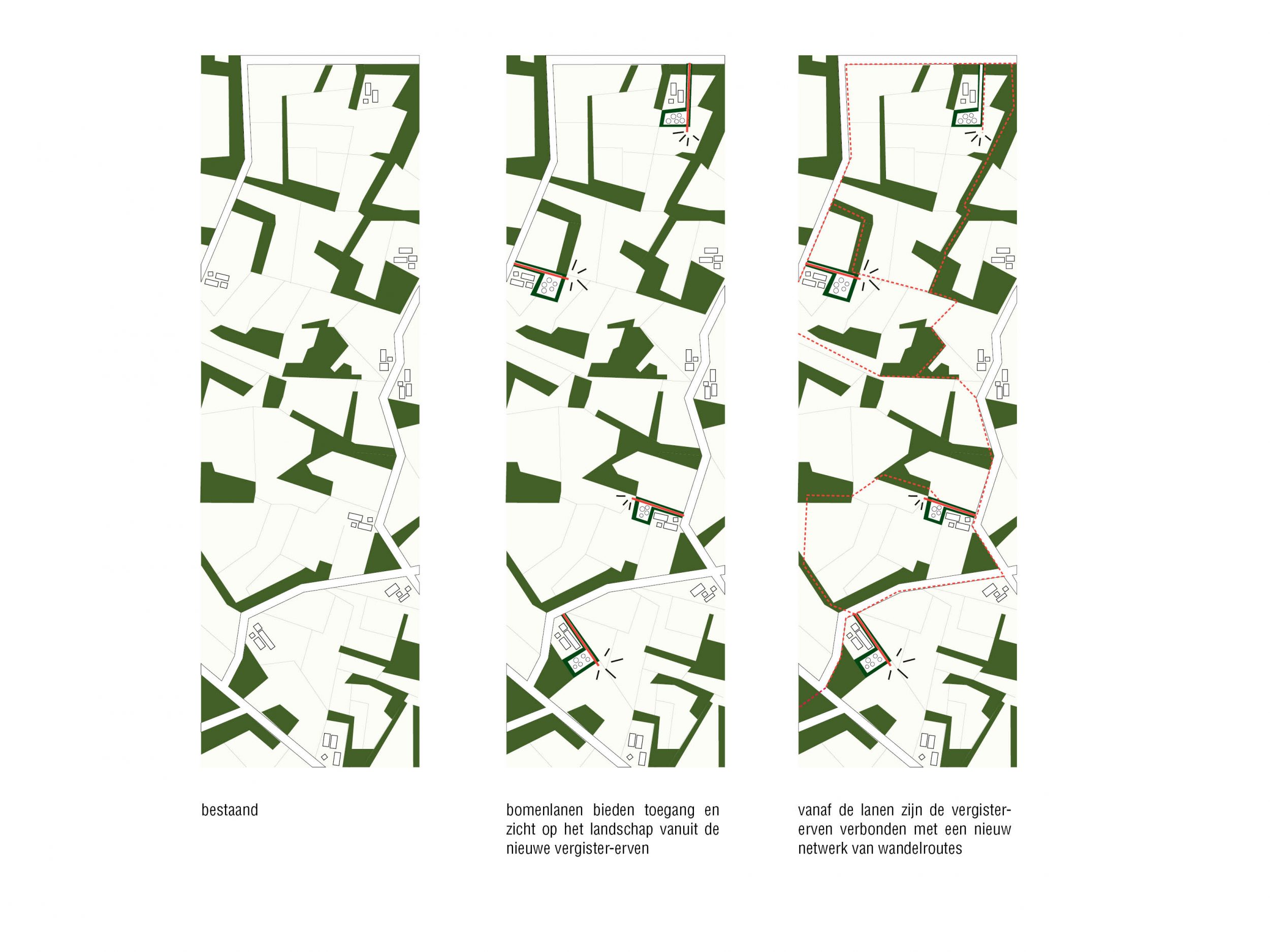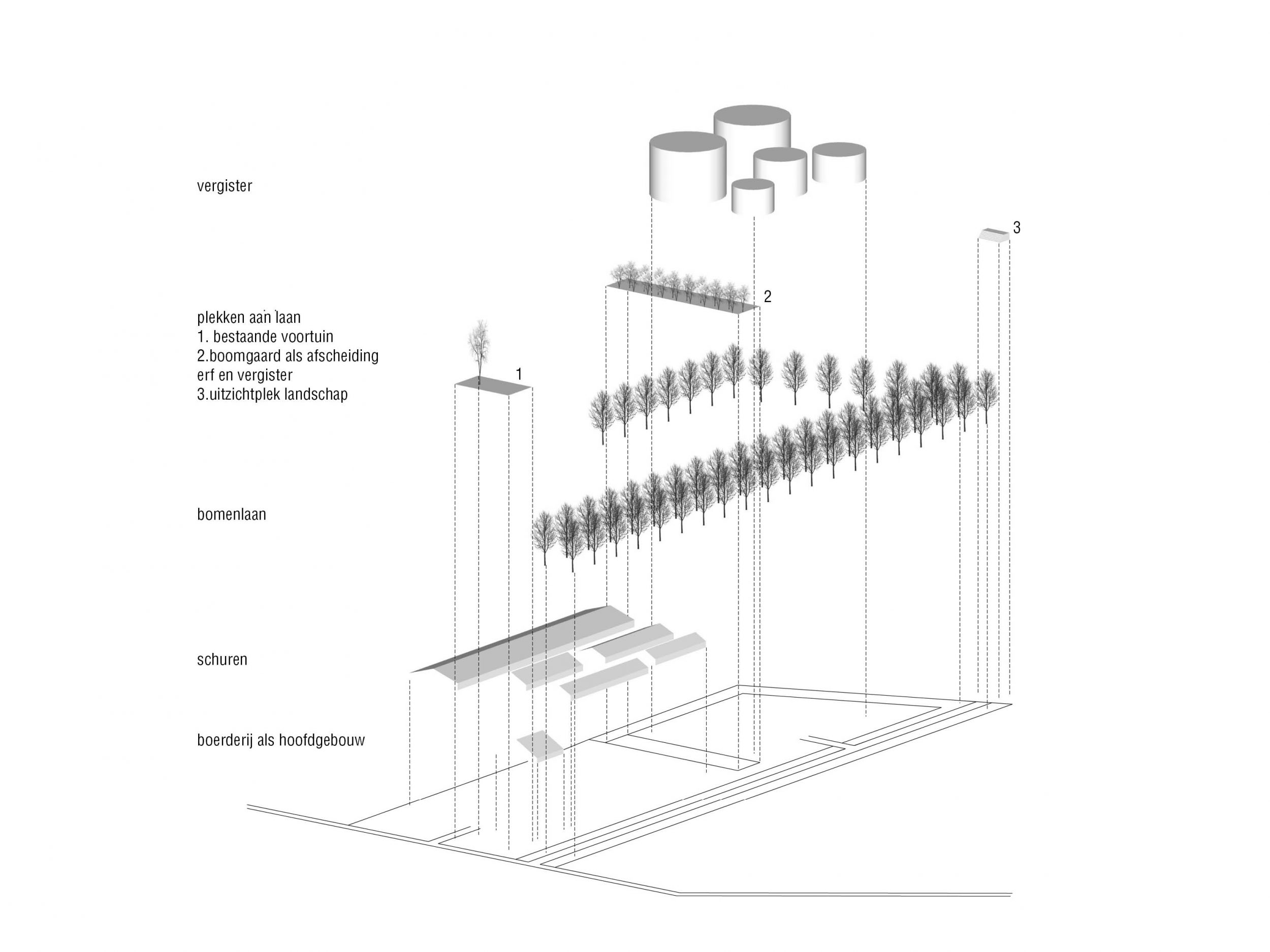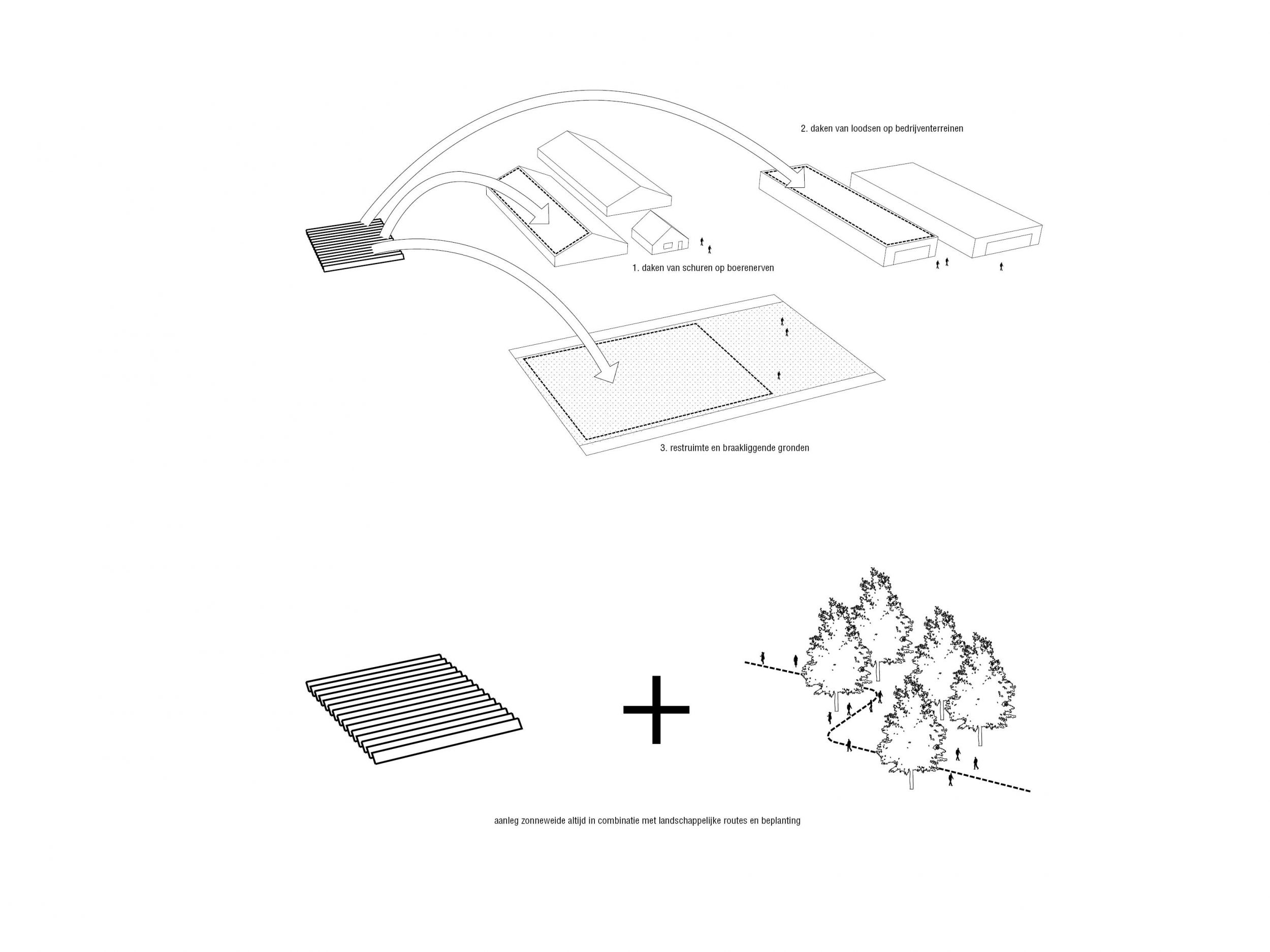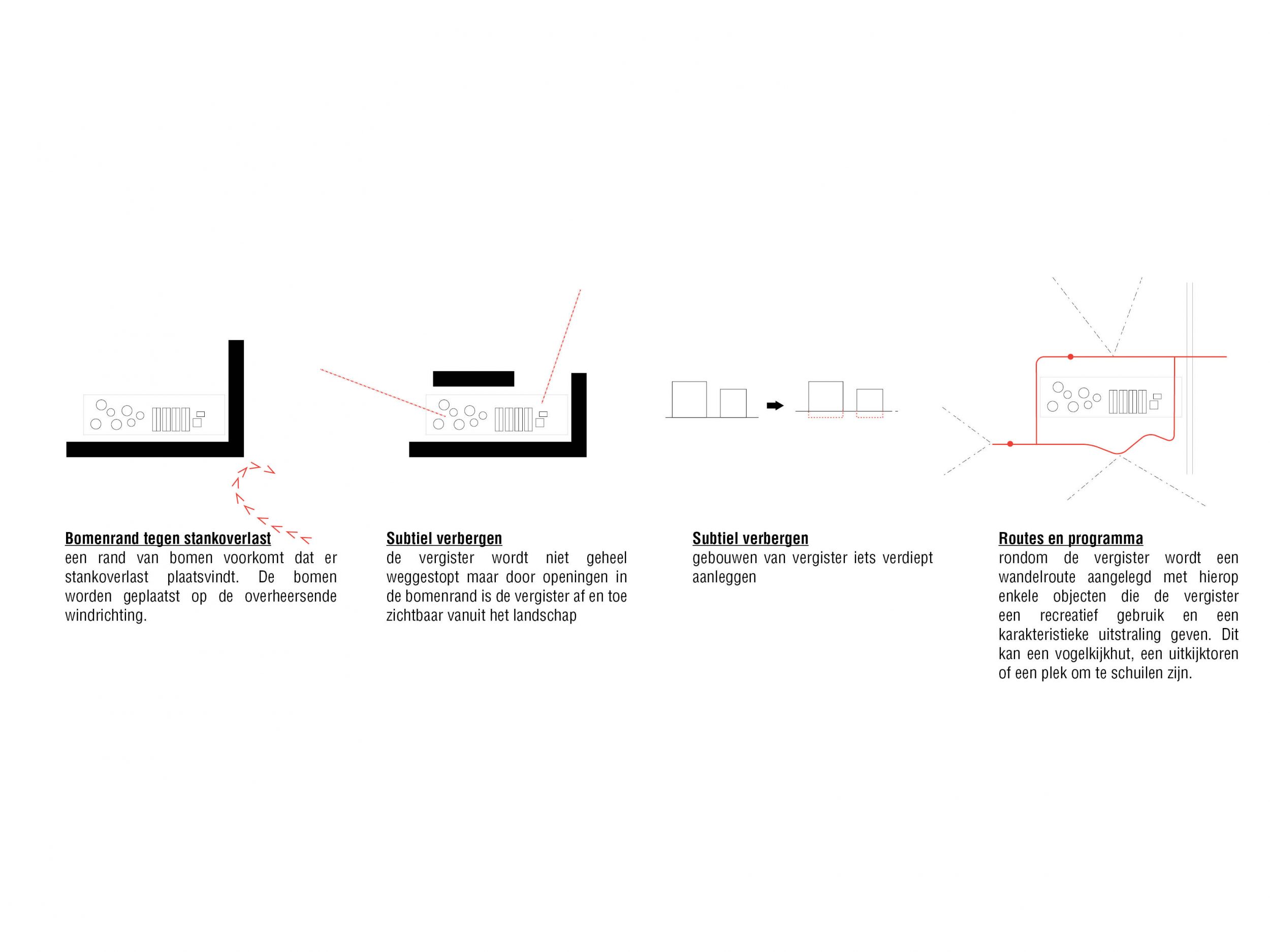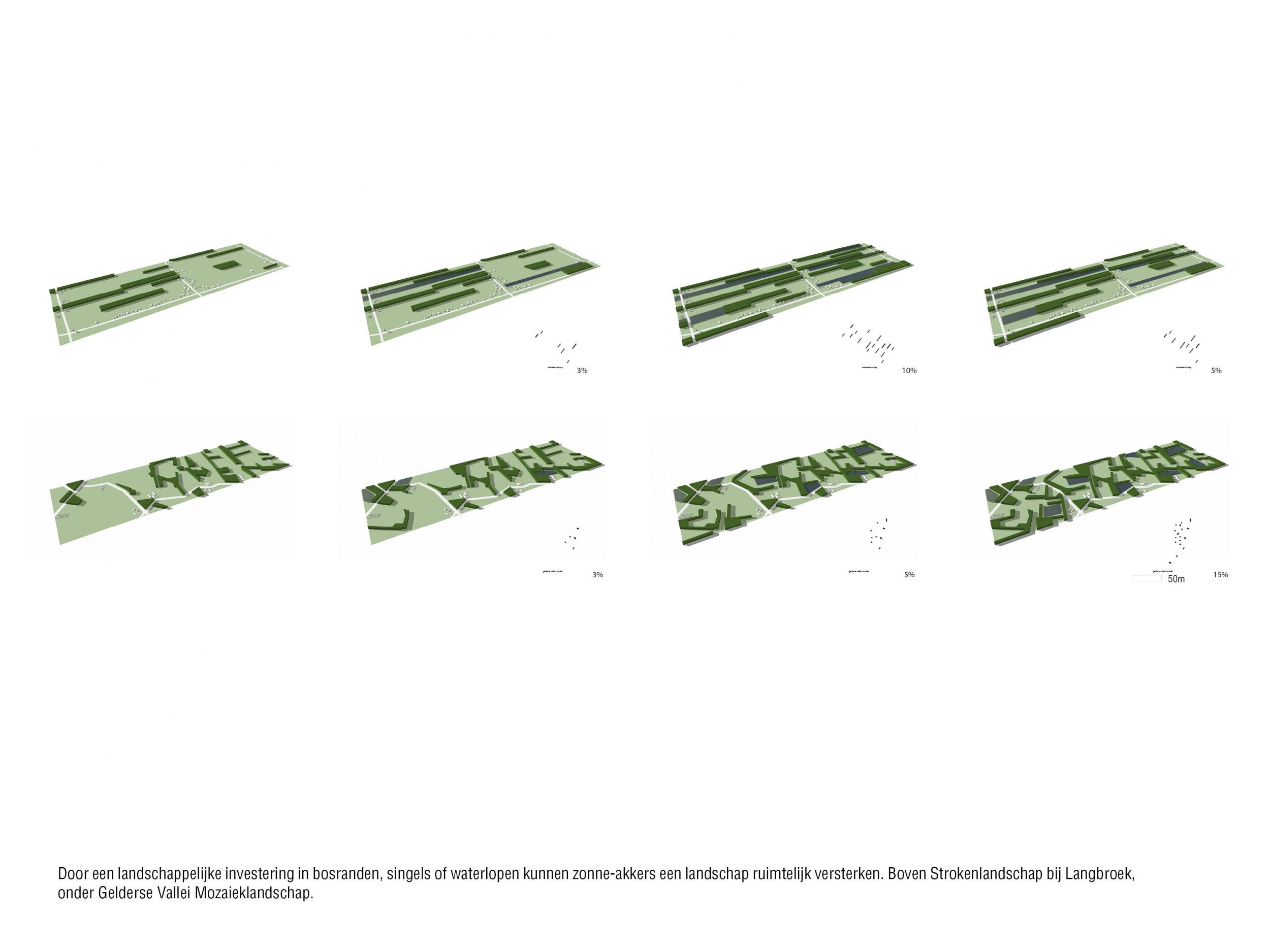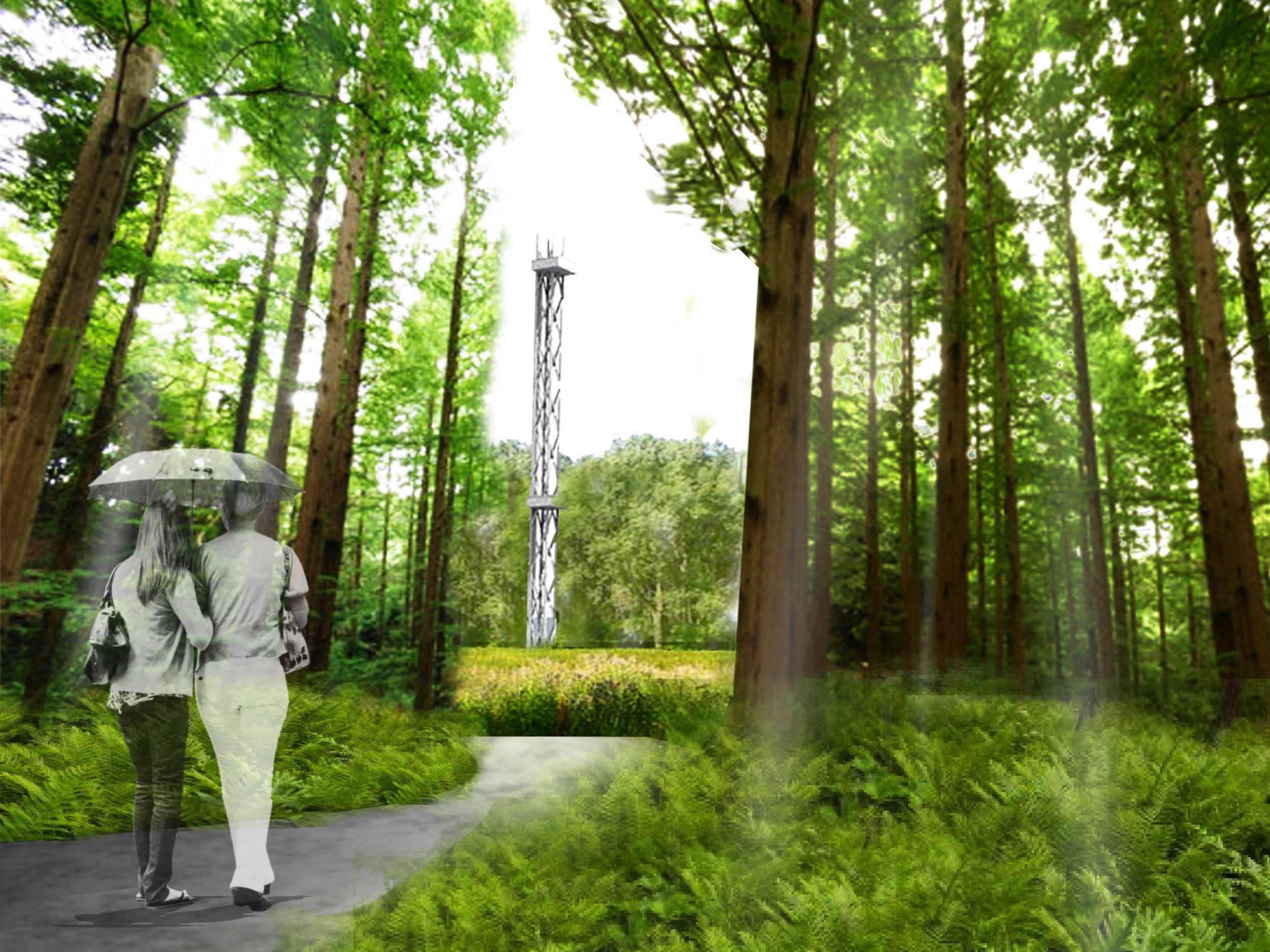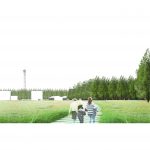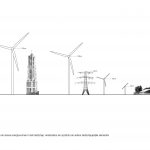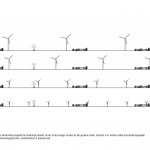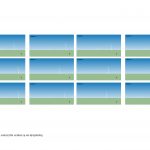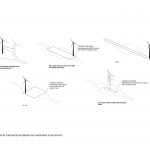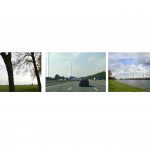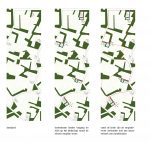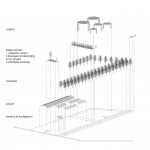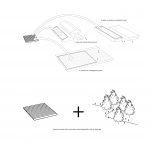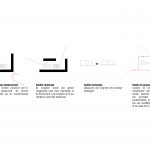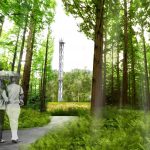The transition to renewable energy is inevitable and the impact of this transition is often underestimated. The province of Utrecht wants to be carbon neutral by 2040, of which 10% renewable energy by 2020. OTO landscape architecture has investigated the spatial integration of promising new energy sources in the landscape: windmills, solar fields and bio digesters.
In the current situation, there seems to be little structure in the placement of windmills. Placing windmills in a line structure is often difficult due to factors such as land ownership, zoning laws or different sizes of mills. Arranging lines demands a certain degree of flexibility. OTO has done an extensive spatial study on the freedom within a line formation and has developed a specific strategy.
Solar energy is the most promising placed on roofs of stalls or sheds. Solar fields are less interesting because the available space in the province of Utrecht is scarce and solar fields require a lot of space. OTO proposes to add landscape investments to solar field projects, By doing so the landscape can be strengthened. Determined by the sort and character of the landscape the amount, size and shape of the fields can diver.
Bio fermentation plants are used for extracting energy from manure and organic residues. The strategy to give the plant a suitable place in the landscape depends on the size of the plant, which ranges from 1 to 5 acres. OTO has made a design strategy for digesters which relate well to the size of an average farm (max 1,5 ha). The digesters are a natural extension of the existing farm and will also give the opportunity to enhance to the accessibility of the landscape.

